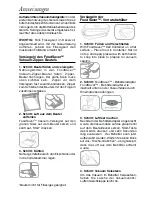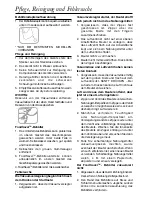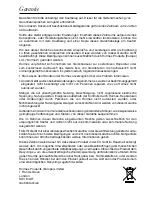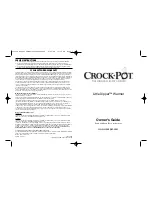
Vacuum Packaging & Food Safety
The vacuum packaging process extends
the life of foods by removing most of the
air from sealed zipper bags and containers,
thereby reducing oxidation, which affects
nutritional value, flavour and overall quality.
Removing air can also inhibit growth of micro-
organisms, which can cause problems under
certain conditions:
Mould
– Easily identified by its fuzzy
characteristic. Mould cannot grow in
a low oxygen environment; therefore
vacuum packaging can slow the growth
of mould.
Yeast
– Results in fermentation, which can
be identified by smell and taste. Yeast
needs water, sugar and a moderate
temperature to grow. It can also survive
with or without air. Slowing the growth of
yeast requires refrigeration, while freezing
stops it completely.
Bacteria
– Results in an unpleasant odour,
discoloration and/or soft or slimy texture.
Under the right conditions, Clostridium
botulinum (the organism that causes
Botulism) can grow without air and
sometimes cannot be detected by smell
or taste. Although it is extremely rare, it
can be very dangerous.
To preserve foods safely, it is critical that you
maintain low temperatures.
It is important to note that vacuum packaging
is NOT a substitute for canning and it cannot
reverse the deterioration of foods. It can
only slow down the changes in quality. It
is difficult to predict how long foods will
retain their top-quality flavour, appearance
or texture because it depends on the age
and condition of the food on the day it was
vacuumed packaged.
Food Safety Warning
Use fresh, perishable foods soon after
purchase. Even under proper storage
conditions, foods lose freshness and nutritive
value if they are stored too long.
Food Preparation Tips
Hard Cheeses:
To keep cheese fresh, vacuum package it
after each use.
IMPORTANT: Soft cheeses should never
be vacuum packaged.
Baked Goods:
To vacuum package soft or airy baked
goods, we recommend using a FoodSaver™
Container so they will hold their shape.
Guidelines for vacuum packaging





































